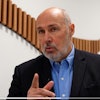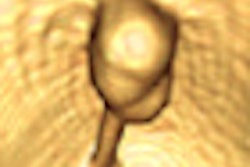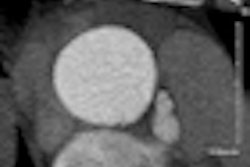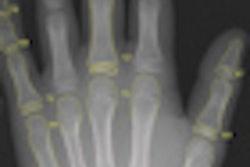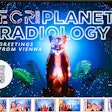VIENNA - Although it requires longer interpretation times, an iPhone can be successfully used for preliminary reading of virtual colonoscopy studies, according to research presented Thursday at the European Congress of Radiology (ECR).
In a retrospective review, a research team from the University of Pisa in Italy found that all lesions diagnosed on an Apple iMac desktop computer could also be identified on an iPhone. However, reading on the iPhone took nearly three times as long.
"Using the iPhone for 2D reading of [virtual colonoscopy] datasets required a substantially longer time for complete image analysis compared with a desktop workstation, due to the need to repeatedly pan and zoom images on the small iPhone screen," said presenter Dr. Lorenzo Faggioni.
In parallel with the evolution of virtual colonoscopy (also known as CT colonography or CTC) technology and the related improvement in its diagnostic accuracy, new tools for visualizing and managing these images have been developed, Faggioni said. In particular, the medical and scientific community can take advantage of open-source software such as the OsiriX DICOM image viewer -- including the mobile version of OsiriX -- and powerful mobile devices such as the iPhone.
Seeking to evaluate the effectiveness of the iPhone as a mobile device for 2D reading of CTC datasets, the Italian researchers retrospectively reviewed 67 CTC exams performed in a colorectal cancer screening setting. All studies were acquired in the supine and prone positions with a low radiation dose and fecal tagging protocol based on the administration of iodinated contrast material.

The lesions in the study included 25 polyps (37.3%) less than 6 mm in size, 29 (43.3%) between 6 mm and 9 mm in size, 10 (14.9%) between 10 mm and 30 mm in size, and three (4.5%) colonic masses.
All datasets were wireless imported in DICOM format on an iPhone 4 (32 GB version) running the OsiriX iPhone application (version 1.13). Two experienced readers independently read the CTC datasets on the iMac (3.06 GHz) with version 3.71 of OsiriX and also on the iPhone.
The researchers evaluated the lesion detection rate and recorded the time needed to read each entire CTC study.
All lesions detected on the iMac were also found on the iPhone.
"The resolution of both screens and both kinds of software was excellent," he said.
However, reading times were significantly longer with the iPhone, Faggioni said. It took a mean time of 13.31 ± 6.29 minutes to read the studies on the iPhone, compared with 5.51 ± 2.45 minutes on the iMac. The difference was statistically significant (p < 0.01).
On the iPhone, readers needed to perform more time-consuming panning and zooming on the much smaller screen, he said.



